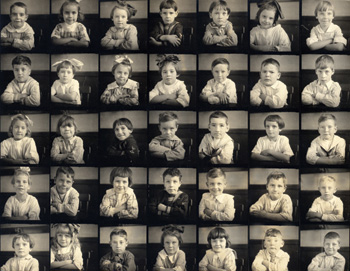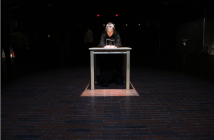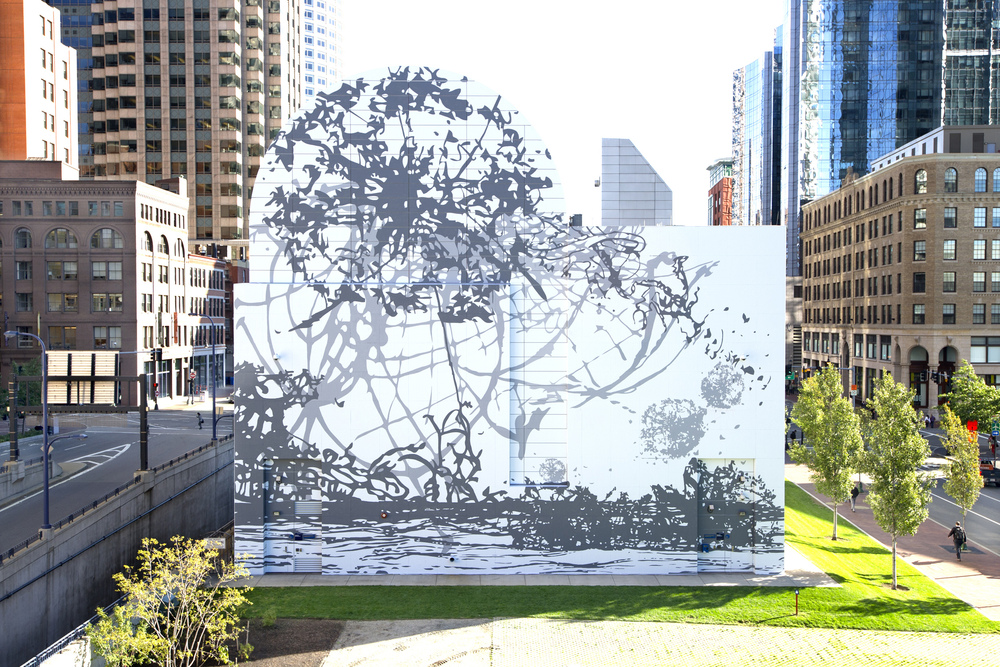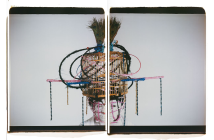From the photographic capture of commonplace social artifacts by Eugene Atget and Walker Evans to the lifestyle documentation in the "snapshot aesthetic" by Nan Goldin and Wolfgang Tilmans, photographing "ordinary" life is at once a historical gesture and a contemporary one. Collecting "ordinary photographs", on the other hand, is fraught with a different set of issues and concerns, the primary one being: do the values and motives of the collector replace those of the artist?
First, a few words about Rodger Kingston, the editor, the
collector, the initiator of the continued re-establishment of value with regard to these images. From gleaned literature surrounding the show, Kingston is a sixty-three year old former barber who began collecting vernacular photographs in the 1970s out of sheer personal interest. In a sense, Kingston himself is vernacular, collecting out of sheer enthusiasmfor artifacts, a Eugene Atget of the regional antique store. This show may then be a collection of Roger Kingston's visual personality, a similar experience to how the individual taste for art and its arrangementby Isabella Stewart Gardner is strongly reflected in the museum which bears her name.
In The Vernacular: Everyday Photographs From the Rodger Kingston Collection at the Boston University Art Gallery does an interesting service in dividing the show thematically with regard to how the images functioned at the time they were made: as authenticators, as simulacrum of experience, as evidence, etc. Still, the substantial success of these images seems far more complicated and desirous of others methods of engagement.
Contextually one thinks of the initial function of the images, but also of the various suggestions the photographs may make. Roland Barthes states in Camera Lucida, "Ultimately, Photography is subversive not when it frightens, repels, or even stigmatizes,but when it is pensive, when it thinks." In accordance, certain images of the show provoke not out of weirdness or sensation, but out of this very thoughtfulness. First Grade, Bruce School, West Lynn, Massachusetts, November 1921 is a headshot grid of 35 first graders photographed identically. Immediately this image reads like the grid of industrial structures taken by the Bechers, but with each portrait inciting a delightful insight into the situation of each child, at once an individual but forced into the physical construction of the archetypal first grader.
Historically each viewer was not only a first grader at some point, but a first grader in photographs. We know what we looked like, we are strongly familiar with how it feels to be there in front of that camera in West Lynn, 83 years ago. Certain constructions remain similar, certain elements look the same, reinforcing the experience perhaps, of what it means to be American and involved in Americana. This show exudes nostalgia, almost in a forced sense, there are very few color photographs or Polaroids. The most recent image included here was taken in 1970, is that the recent border of memorable Americana?
Aside from the reference to Americana or the analogy (or lack thereof) to the present day experience, lies the history of the object themselves. One wonders how the value of these objects were so diminished as to find themselves in a commercial setting. How frightening it would be to see our cherished family albums in a bin at a flea market or antique store! The experience of seeing the photographs in the gallery adds to the fable, the mythology, of who the photographer was, what the image was for, and what fortunes or misfortunes came upon the object itself.
All in all, these vernacular photographs are about how photographs work, that despite the confluences of history, functionality, and context, the photographs exhibit, as Roland Barthes states: " the mark of something (that) has triggered me, has provoked a tiny shock, a satori.
Links:
Boston University Art Gallery
Photographic Resource Center
"In The Vernacular: Everyday Photographs From the Rodger Kingston Collection" is on view until January 23rd, 2005 date at Boston University Art Gallery in the College of Fine Arts at 855 Commomwealth Ave.
This exhibition is shown in conjuction with Vernacular Photography: Contemporary Responses to Found and Family Photographs at the Photographic Resource Center at 832 Commonwealth Ave. and Keepsakes featuring an installation of polaroids from Found Magazine's collection at 775 Commonwealth Ave in the Student Union at Boston University
All images are courtesy Rodger Kingston and Boston University Art Gallery
Ben Sloat found this review in an antique store. He is regular contributor to Big, Red & Shiny.




